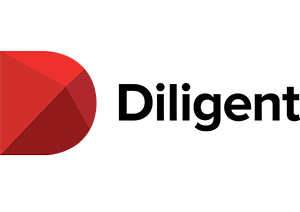Google “do more with less in legal” and many of the top results date back to 2008 and beyond. It is difficult to remember a time when legal budgets were not on the chopping block. Yet there has never been a time when their services were more in demand—from global regulation to cybersecurity to go-to-market strategy.
If organizations are going to complete their long-sought-after digital transformation in as litigious a world as today’s, legal must lead. And they cannot do so armed with nothing.
A Mutual Understanding
Legal teams are awake to the fact they are no longer immune from measurement. “The corporate C-suite is revoking law’s immunity from business accountability, process, and metrics,” writes Mark A. Cohen in Forbes. Yet too much measurement—an overapplication of scrutiny and underappreciation for the nuances of their work—can have adverse effects.
Consider the legal teams where the CEO’s understanding of the “do more with less” mandate is that it is mere cost-cutting. Under budgetary pressure, legal teams can outsource to low-cost firms in tremendously expensive ways. For example, outsourced discovery that unearths merely passable documentation to argue an anti-money laundering case that is then lost can devastate a year’s returns. Or a lighter legal staff that’s forced to allow subsidiaries to act with impunity because they are short-handed can draw the ire of regulators who come down hard on the parent company.
The future demands more diligence, not less. It demands a deeper understanding of whether officers are discussing ERG matters in every board meeting, where sales teams are selling deals, and what the CEO of a potential acquisition target was tweeting in 2014. Not having this data leaves corporations fumbling. It is estimated that the cost of disconnected data is $140 billion per year in the U.S. and UK alone.
The “do more with less” mandate must then be interpreted as legal teams see it: It’s about increasing efficiency, not simple labor arbitrage. It’s about studying business units and thinking about them as customers of the team’s legal services rather than obstacles or fountains of risk. This process has been happening to law firms over the past decade and the Harvest Business Review describes it as a “dramatic shift—from operating in a relatively price-insensitive sellers’ market to competing in a highly price-sensitive buyers’ market.”
Phrased in these terms, legal teams are ready to step up. They’re coming up with tremendously innovative ways to not just do with less—but to actually do more. And with the right support from the CEO to invest in the areas they need it, they can.
Maximum Productivity
At one sales productivity software startup, the legal team is now just a chat away. Using a software that operates within Gmail, salespeople are able to “tag” counsel to open a messaging thread whereby the counsel is immediately able to review the email in question. There’s no need for an email thread, no need to repost the email to, say, Microsoft Teams to ask for comment—just a quick, “Yes that’s okay” or “No we’d need to review that.” It’s a harbinger of how legal teams are doing more without spending more time. One person can, with technology, be with every salesperson, all at once.
At another firm, the legal team spends less time than they ever have waiting on signatures thanks to entity management software. Retainers and intake forms follow a template and requests for signature emails are sent automatically, based on who the signing authority is in the system, and they continue to receive reminder emails until it is signed. Once it is, everyone received a countersigned copy and the form is, in some cases, filed automatically with the relevant authority.
Technology is helping legal teams:
- Rethink counsel selection, and ask, are top firms worth a top fee?
- File some paperwork automatically, with no human involvement
- Generate routine reports automatically
- Query systems themselves and obviating the need for an outsourced law firm
- Simplify billing and invoicing processes with software
- Arm paralegals with tools to automate routine tasks like requests for information
- Deputize officers and HR at subsidiaries with reporting accurate information
- Repurpose travel and expenses fees to other ends
- Justify legal operations expenses by reducing risks elsewhere
Core to these decisions is better and more up-to-date entity management software. To be in more places at once, legal teams need the freedom to purchase tools that can act in their stead. When annual reports can be generated automatically, for most subsidiaries, legal teams are freer to explore alternative corporate structures. When compliance risks are computed automatically and alerts sent, fewer fees are going to the big four auditors.
Ipso Facto
If legal teams were to pen an open letter to their CEO to explain all this, it might read: We can do more with less. We always have. But to do it in the digital age, doing more first requires buying more—a modern entity management software. Otherwise, we can do with less, but then we’ll be doing a lot less. Get in touch and request a demo to see why Diligent Entities is the market leader in entity management and board management solutions.
Kerie Kerstetter is the Director of Content Strategy for Diligent and the Next Gen Board Leaders.











